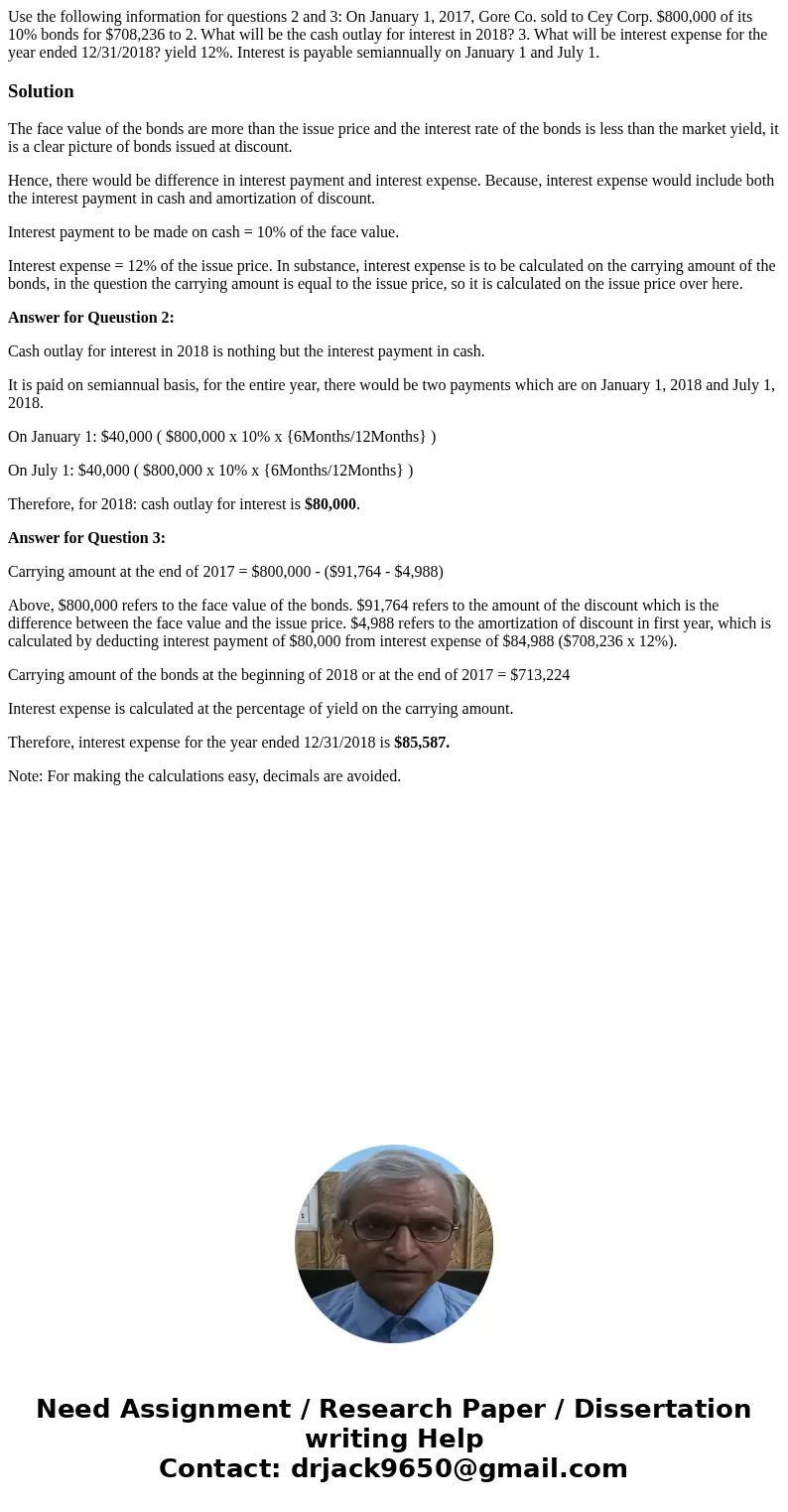Use the following information for questions 2 and 3 On Janua
Solution
The face value of the bonds are more than the issue price and the interest rate of the bonds is less than the market yield, it is a clear picture of bonds issued at discount.
Hence, there would be difference in interest payment and interest expense. Because, interest expense would include both the interest payment in cash and amortization of discount.
Interest payment to be made on cash = 10% of the face value.
Interest expense = 12% of the issue price. In substance, interest expense is to be calculated on the carrying amount of the bonds, in the question the carrying amount is equal to the issue price, so it is calculated on the issue price over here.
Answer for Queustion 2:
Cash outlay for interest in 2018 is nothing but the interest payment in cash.
It is paid on semiannual basis, for the entire year, there would be two payments which are on January 1, 2018 and July 1, 2018.
On January 1: $40,000 ( $800,000 x 10% x {6Months/12Months} )
On July 1: $40,000 ( $800,000 x 10% x {6Months/12Months} )
Therefore, for 2018: cash outlay for interest is $80,000.
Answer for Question 3:
Carrying amount at the end of 2017 = $800,000 - ($91,764 - $4,988)
Above, $800,000 refers to the face value of the bonds. $91,764 refers to the amount of the discount which is the difference between the face value and the issue price. $4,988 refers to the amortization of discount in first year, which is calculated by deducting interest payment of $80,000 from interest expense of $84,988 ($708,236 x 12%).
Carrying amount of the bonds at the beginning of 2018 or at the end of 2017 = $713,224
Interest expense is calculated at the percentage of yield on the carrying amount.
Therefore, interest expense for the year ended 12/31/2018 is $85,587.
Note: For making the calculations easy, decimals are avoided.

 Homework Sourse
Homework Sourse